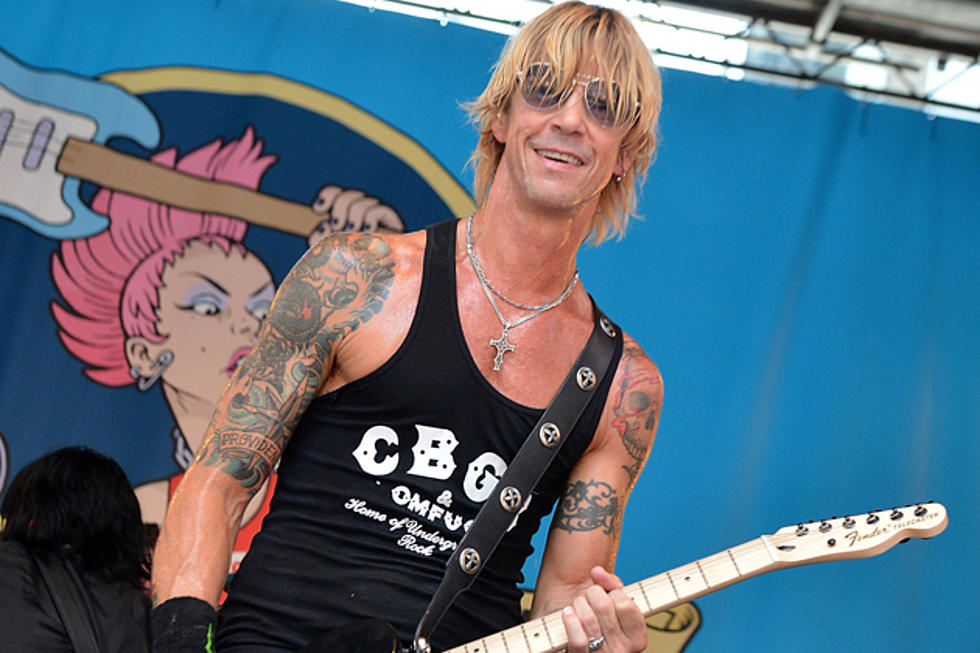17 Years Ago: Van Halen Release ‘III’ With New Singer Gary Cherone
On March 17, 1998, Van Halen's recording career hit its first (and so far only) road bump with the release of III, an album that debuted their third singer, former Extreme vocalist Gary Cherone.
After decades of amazing success with two very different frontman -- flamboyant original belter David Lee Roth and his more straight-ahead successor Sammy Hagar -- Van Halen found themselves estranged from both after a temporary studio reunion with Roth led to Hagar's departure. (And yes, that's the extremely short version of what could be a long, hotly debated story all by itself.)
Undaunted, the group began searching for a new singer. Cherone described how quickly his audition proceeded to Rolling Stone: "I'm holding my suitcase, my overnight bag – and Ed goes, 'You ready to sing?' I go, 'Yeah. Can I go to the bathroom first?' Then we literally went into 5150, three other songs from the Hagar catalog and 'Jump' and 'Panama' from the Dave era ... the Dave stuff was easy. Sammy stuff ... I thought I'd have a hard time with that, but it was good. I think we sang four songs and Eddie went to the bathroom, came back out and said, 'Let's write a song.' It was a good day."
The singer promptly inspired newly sober guitar genius Eddie Van Halen to work in a different manner. "I've been making music for 37 or 38 years and never has somebody handed me lyrics to work with," Van Halen told Guitar World in March 1988 (via VHLinks). This record is the biggest milestone in my life because the lyrics came first, then the music. I finally had something to bounce off."
Unfortunately, it seems Van Halen had drawn from the new singer well one too many times, as their songwriting chemistry with Cherone didn't deliver results on a par with the group's past work.
Eddie's guitar wizardry remained intact, of course, and songs such as "Dirty Water Dog" and especially "'Once" found the band exploring new, sophisticated textures and moods rather successfully. But too often, overlong tracks like "Without You," "Year to the Day" and "Ballot or the Bullet" lacked the band's usual hooks and sense of melody, with their numerous, sometimes random changes of direction sounding like a lack of focus instead of confident exploration. Eddie also took much flack for his debut turn at the microphone, the dramatic, overly didactic and rather Roger Waters-sounding piano opus "How Many Say I."
Fan response to III' wasn't very strong, as it became the first Van Halen record not to sell at least a million copies. The supporting tour also met with less than stellar sales, despite the fact that the group unearthed many Roth-era songs they had avoided during their time with Hagar. After reportedly beginning work on a second album together in 1999, the group fired Cherone.
Still, as he points out in the same Rolling Stone interview, "I was one of three singers in the mighty Van Halen. You can't take that away from me." Somewhere, George Lazenby is nodding vigorously.
Five years later, Van Halen recorded three new songs with Hagar for another greatest hits album, then embarked on an ill-fated tour with him that seems to have ended the friendship between those two camps once and for all. In 2007 the group finally reunited with Roth (but without original bassist Michael Anthony, now replaced by Eddie's son Wolfgang on bass) for a highly successful tour. Nearly 14 years after the release of III, Van Halen released A Different Kind of Truth, their first studio album with Roth on vocals in nearly three decades.
See Van Halen and Other Rockers in the Top 100 Albums of the '80s
More From 96.5 KNRX










